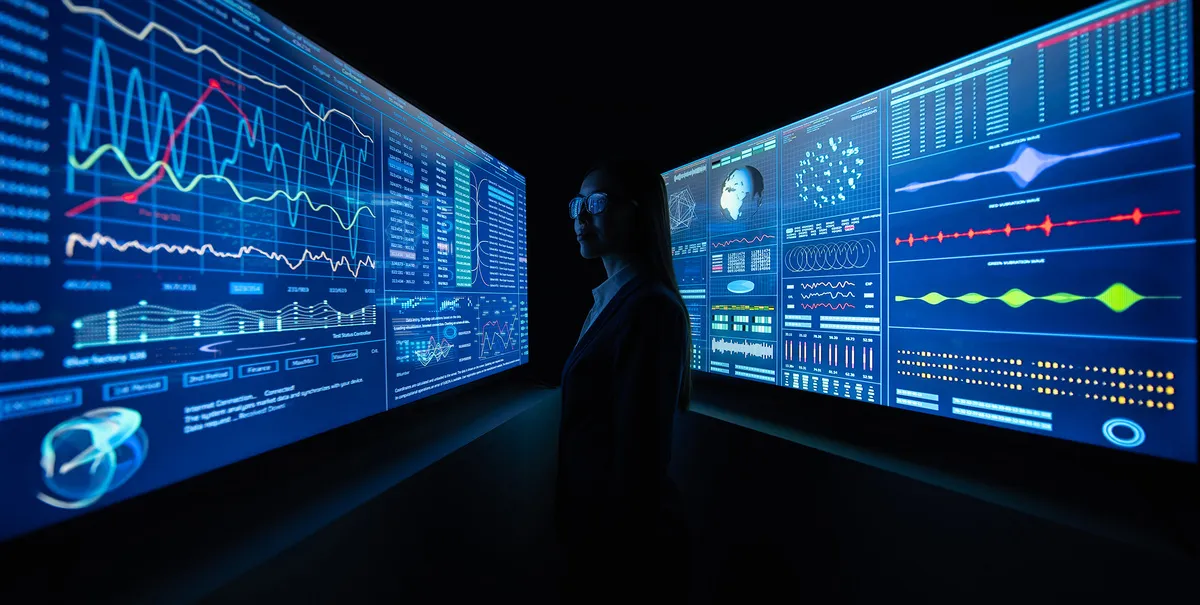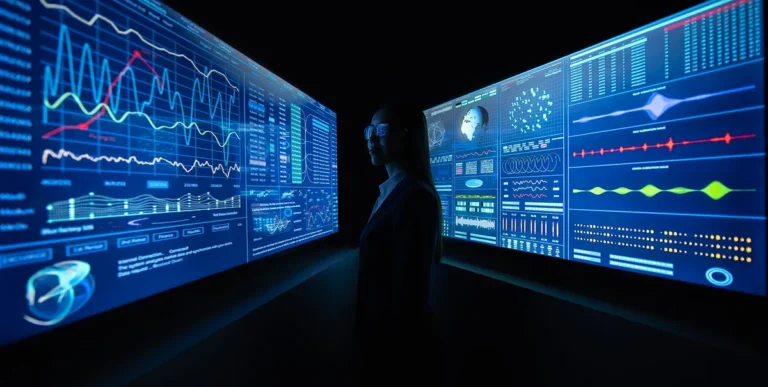It’s no secret that the amount of data available to us today is growing exponentially. Much has already been written about the rapid growth of big data and the progress being made in artificial intelligence. Analytical research is enabling us to extract even more meaningful insights from this data.
However, in order to truly exploit the full potential of the growing investments in big data, we must also look at the last mile: the suite of technologies used in translating data-driven insights into consumer action.
Data
In 2013, IBM found that 90% of the world’s data was created over the previous 2 years. In 2024, over 328 million terabytes of data (give or take) are generated daily. That’s not so difficult to imagine when looking around at today’s connected, real-time world.
With all of our social interactions online, our communication is public and exponentially multiplied in frequency. Instead of interacting with a select group of close friends over the course of a week, we now interact with a much broader group of hundreds of friends online daily.
Facebook has over 3 billion monthly active users. When it comes to dating, we’re no longer set up on a date by a mutual friend, but instead we swipe through hundreds of profiles and faces without meeting or speaking to the person on the other side of the screen.
While traditional poker players played around 75,000 hands offline per year, today’s online pros can play 2 million hands a year with the same time investment. As a result, a 23-year-old online poker pro is likely a more experienced player than the 60-year-old sitting across from him when playing in person.
Post on
And every day devices are becoming more connected. The internet of things (IoT) revolution is a reality. Statista estimates around 16 billion “things” already connected and another 16 billion devices expected to join by 2030.
These connected devices are stacked with data that is increasingly generated by private companies. For the first time in history, private businesses possess more data than public institutions.
With so much available data, marketers sometimes find it challenging to extract meaningful, actionable insights, sparking more than one debate around the ROI of big data investments.
Insights
Luckily, the impact of Moore’s Law coupled with the development of more advanced data-processing algorithms is here to save the day.
Today’s cell phones boast hundreds of times more computational power than Deep Blue, the Supercomputer made famous for beating chess world champion Gary Kasparov in 1997. They also cost a fraction of the price and fit in our pockets.
New machine learning approaches have managed to extract insights from this vast mountain of data. These rich insights, together with the rise of insight-driven marketing, are aligning entire organizations around data-driven projects, aiming to monetize and capitalize on the investments made.
But if the customers aren’t listening, success may be elusive.
Communication
Much like the other parts of the value chain — where automation was an essential part of handling the extreme complexity of data collection and analysis — automation is also becoming a critical component for the success of the last mile in the value chain: customer communications.
Think about how far we’ve come:
- Marketing automation technologies have enabled marketers to effectively drive high volumes of leads through their funnels while applying complex rules and insights.
- Mail merge made it possible to apply different rules and approaches to each individual lead or customer.
- Programmatic ad buying has made it possible to manage media campaigns across a highly complex landscape of networks and platforms.
But while translating insights into personal emails or hyper-targeted banner ads may be a good start, these media all fall short on storytelling and customer engagement.
The one medium that consistently beats out the competition on all engagement metrics? Video.
In the past, high production costs and long timelines to deploy made this an unsuitable medium for anything other than broadcast messages aimed at very broad audiences.
However, technological developments in the realm of real-time video rendering have made video accessible to insight-driven and results-oriented marketers. Companies are now able to deliver engaging and highly personalized campaigns to their customers using Personalized Video.
Consider the case of a U.S. telco carrier we worked with on addressing one of their CEO’s main concerns: extremely high churn. Our client employed a cross-functional approach using data-driven analysis to extract meaningful insights regarding the pain points experienced during the customer onboarding journey.
These insights were then used to create a series of 10 videos, delivered at strategic points during the onboarding journey. These videos were personalized to each customer using data such as their location, billing plans, device, optional packages, data usage, and interactions with customer care. The end result obtained was a 37% reduction in early churn, far above our client’s expectations!
This success was partly due to the strong and effective insights of planning. It was also due to the video communication channel selected to translate these insights into actions. In this specific case, 13% of customers engaged with the video.
According to Silverpop’s Email Marketing Metrics Benchmark Study, on average 3.2% of customers interact with an email message sent to them. So we can estimate that using Next Generative Video as the means of communication was responsible for 75% of the value creation in this project.
We’ve done hundreds of personalized onboarding videos over the years, the majority of them sent via email. To give you an idea of what it might look like, here’s an example from the insurance industry.
But data-driven videos can be delivered via email, in app, on a website, in ads and more. It just depends on what you have to say and how you need to say it. Again, the data drives the approach.
Big Data: In Summary
Big data is here to stay. It’s understood best when sorted into data collection, cloud uploading, and video communication.
Post on
Organizations worldwide are rapidly adopting big data for a range of uses — over 75% use it to drive innovation. McKinsey & Company found from their survey that nearly 3 out of 4 CMOs believe marketers “are always asking for more money, but can rarely explain how much incremental business this money will generate.”
These are clear indications that the ROI debate around these ever-growing investments is set to continue. Machine-generated insights require machine-driven campaigns across all mediums. Employing the latest video personalization and automation technologies will ensure that growing investments in big data will translate into real market value.






